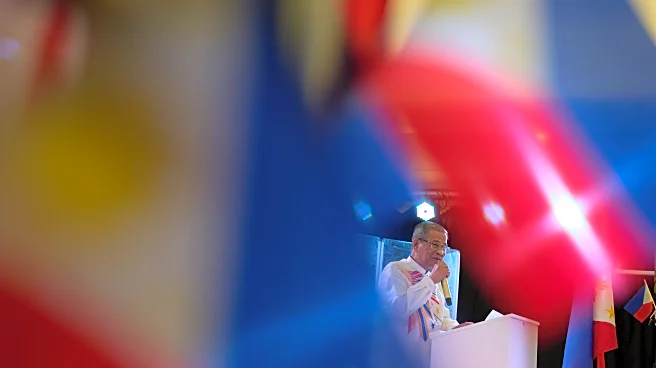What's Happening?
The Museum of Contemporary Art in Los Angeles is hosting an exhibition titled 'Monuments,' which features decommissioned Confederate statues alongside contemporary artworks. The exhibition, co-curated
by Hamza Walker, Bennett Simpson, and Kara Walker, aims to explore the socio-political and cultural significance of these monuments. The exhibition includes nearly 20 monuments, some of which are vandalized or fragmented, and others intact. Notable pieces include a bronze statue of Jefferson Davis and the decommissioned Lee memorial from Charlottesville. Contemporary artists such as Leonardo Drew and Martin Puryear contribute works that serve as counter-monuments, critiquing the legacy of these statues.
Why It's Important?
This exhibition is significant as it addresses the ongoing debate over Confederate monuments in the U.S., which are seen by many as symbols of racism and oppression. By juxtaposing these statues with contemporary art, the exhibition encourages dialogue about American history and the narratives these monuments represent. It highlights the role of art in challenging historical narratives and fostering discussions about race, identity, and memory. The exhibition also reflects broader cultural shifts in how history is commemorated and the importance of re-evaluating public symbols in light of contemporary values.
What's Next?
The exhibition is expected to spark discussions among visitors and critics about the role of Confederate monuments in American society. It may influence future decisions by municipalities regarding the fate of similar statues. The curators hope to inspire curiosity and dialogue, potentially leading to more exhibitions that address historical and cultural issues. The exhibition could also impact how museums approach controversial subjects, balancing historical preservation with contemporary critique.
Beyond the Headlines
The exhibition raises ethical questions about the preservation and display of controversial historical artifacts. It challenges viewers to consider the implications of maintaining monuments that honor figures associated with slavery and racism. The exhibition also highlights the power of art to reinterpret history and provoke thought, suggesting a shift towards more inclusive narratives in public spaces.












